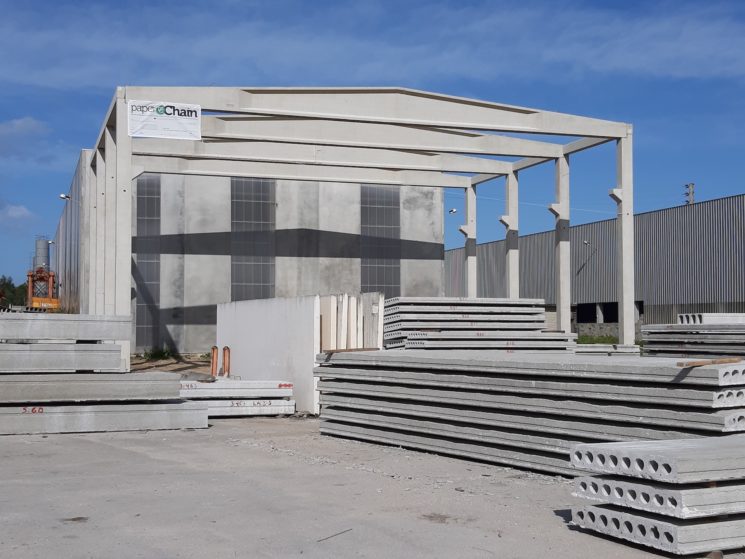paperChain assesses the use of industrial waste in the construction sector
Industrial prefabricated concrete pavilion and a road pavement in Aveiro are the two pioneering demonstration cases of using waste in construction. Residues from the pulp and paper industry are tested as secondary raw materials, with a circularity and industrial symbiosis basis. paperChain intends to contribute to the goal of Zero Waste and demonstrate the concept of Circular Economy.
An industrial pavilion and a road section, both in the Aveiro region, are the first visible results of using waste generated in the pulp and paper industry in precast concrete structures and in bituminous mixtures for roads paving in Portugal.
The challenge, which is both complex and ambitious, emerged as part of the paperChain project and is already being put into practice in Ílhavo and Cacia: using waste from pulp production, such as lime ash, dregs and grits (granular waste) as secondary raw materials in the construction sector, integrating them in a circular economy logic. The paperChain project includes 20 partners from five EU countries committed to circularity boosting). In Portugal, the entities involved include the University of Aveiro, The Navigator Company, Spral, Megavia, RAIZ Research Institute and the Sustainable Habitat Cluster. Called "New niche markets for waste from the pulp and paper industry based on the circular economy", it is coordinated by the company Acciona Construction (Spain).
The first case of circularity application in Portugal, in the scope of paperChain project, focuses on the use of lime ash as filler in prefabricated concrete, and an industrial pavilion has just been built in Ílhavo, at SPRAL facilities, and whose structure has been prepared for long-term monitoring. The second Portuguese case, focused on the use of dregs and grits as fine aggregates and fillers in the surface layer of roads, was implemented at the facilities of The Navigator Company in Cacia (Aveiro).
It consists of a 250 m road section in a total area of 2800 m 2 , by involving the addition of a reference bituminous mixture (standard), and two different mixtures containing dregs and grits in the final formulation. Before the use of dregs and grits in the final bituminous mixture, the residues were pretreated by a waste management company (Dilumex). This road section is being monitored until February 2021.
Technical and environmental monitoring is now being carried out to validate the long-term durability and performance of these new circular solutions. The tests are being carried out by the University of Aveiro and by RAIZ – Forest and Paper Research Institute, a private, non-profit research centre, recognized as an entity of the National Scientific and Technological System and as an Interface Centre – Valorisation Centre and Technology Transfer.
Download complete Press Release
Descarregar o comunicado de imprensa completo
Descarga el comunicado de prensa completo

